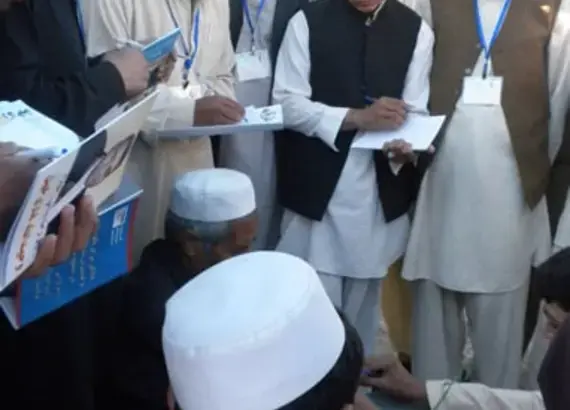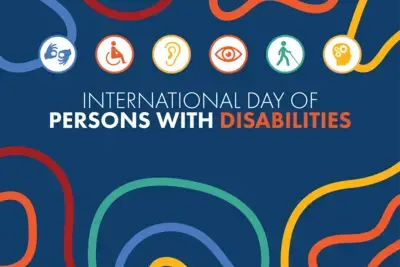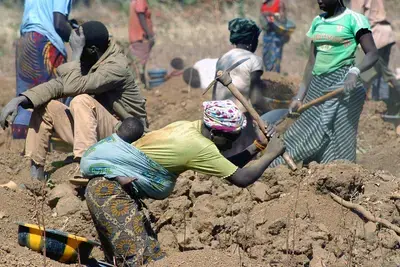
Success Story
Despite Violence, Voters in Afghanistan Show Commitment to Democratic Process, NDI Finds
Although violence marred the electoral process in many parts of the country, millions of Afghans turned out to vote in legislative elections Sept. 18, showing courage and resolve to move their nation toward a more democratic future, NDI said in a statement issued Monday.
“Afghanistan’s 2010 electoral process has demonstrated that millions of Afghans – as candidates and their agents, voters, domestic election monitors and polling officials – are committed to ensuring that the nation’s government reflects the will of the people,” the Institute said.
But NDI also pointed out that many problems, some dating back to Afghanistan’s first elections in 2004, still have not been addressed. These include a defective voter registration process, barriers to women’s participation, and the need to secure the independence from the executive of Afghanistan’s two election bodies, the Independent Election Commission (IEC) and the Electoral Complaints Commission (ECC).
NDI fielded an observation mission for the elections for the Wolesi Jirga, the lower house of the National Assembly. Some 164 Afghan and international observers from 13 countries operated in 30 of the country’s 34 provinces and visited 730 polling stations on election day, despite the limitations created by the security situation.
The Institute stressed that its statement today is preliminary as it is too early to fully evaluate the quality of Afghanistan’s election process. Many steps remain to be completed, including the difficult challenges posed by the detection of fraud, which severely marred the last election cycle in 2009.
“Because the margins between the contesting candidates will likely be slim,” the statement said, “a small number of votes could affect the outcome of the elections for some candidates. Therefore, it will be critical for domestic and international observers to closely follow the tabulation and complaints process throughout the post-election period.”
Potential irregularities include improbably high turnout rates in insecure areas, high turnout at women’s polling stations, suspiciously high numbers of votes cast at a single polling station and the statistically anomalous distribution of votes among polling stations within a polling center. How the IEC responds to any irregularities will affect the credibility of the elections.
NDI noted that the IEC’s preparations this year showed substantial improvement over past elections, citing in particular the IEC’s adoption of several fraud mitigation measures. These included the removal of approximately 6,000 former polling officials suspected of engaging in fraud in 2009, rotating provincial and some district polling officials to distance them from local power and patronage networks, eliminating the ability to transfer ballots from one polling station to another, and placing unique serial numbers on the ballots to better detect fraud.
But many challenges remain, NDI said. “There is a continuing pervasive mistrust of the electoral institutions among a broad range of electoral participants, including candidates, political party leaders and activists, journalists and many Afghan citizens,” according to the statement.
Some of the problems NDI noted are the widespread belief that the IEC and the ECC are vulnerable to political pressure and the existence of a massive number of false voter identification cards.
In much of the country, the balloting proceeded in an orderly manner on election day. However, NDI observers identified several problems in some areas of the country, including ballot shortages, problems with ink, and the attempted use of the false identification cards. The extent to which these problems may have affected the electoral process is unclear.
The Institute also focused on the security situation. The statement noted that “violence and the threat of violence shaped every aspect of the elections process.” It impeded the ability of candidates to campaign in some areas of the country, hindered the recruitment of polling officials, influenced the placement of polling centers, prevented balloting from taking place in more than 1,000 polling centers, and prevented domestic and international observers as well as candidate agents from reaching many polling sites.
The statement includes a number of recommendations for improving the electoral process. These included:
- The Afghan government should investigate and vigorously prosecute election-related crimes, including violence by candidates’ supporters and the misuse or attempted misuse of voter identification cards.
- The Wolesi Jirga should take steps to ensure the independence of the IEC and the ECC.
- The ECC should be made into a permanent body rather than expiring after the certification of election results.
- The ECC should take steps to ensure that provincial complaints commissions adopt uniform procedures and act in a transparent manner.
- An accurate voter registry and /or civil registry should be prepared.
- Alternatives to the Single Non-Transferable Vote (SNTV) system should be reviewed.
- Steps should be taken to ensure greater female access to polling stations.
- Greater security for women candidates is needed.
- The Wolesi Jirga should launch a comprehensive review of the electoral process.
NDI’s election mission builds upon the Institute’s 25 years of experience observing over 200 elections around the world and its significant election-related and operational experience in Afghanistan. The Institute arrived in Afghanistan in early 2002. For this year’s election, it conducted orientation sessions for more than 1,700 candidates (68 percent of the total), organized training for political parties and campaign schools for more than 240 women candidates (62 percent of the total), and provided technical assistance to the Free and Fair Elections Foundation of Afghanistan, the country’s largest domestic election monitoring organization. It also was involved in the training of 35,000 candidate agents across the country who reported on election day activities.
The Institute’s election observation mission in Afghanistan is funded through a grant from the U.S. Agency for International Development.
NDI’s website, www.afghanistanelectiondata.org, provides information for mapping and analysis of Afghanistan election data from 2004, 2005 and 2009.
Pictured Above: Candidate agent observers watch the sealing of a ballot box.
Published September 20, 2010



